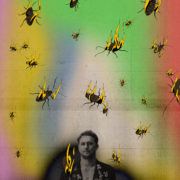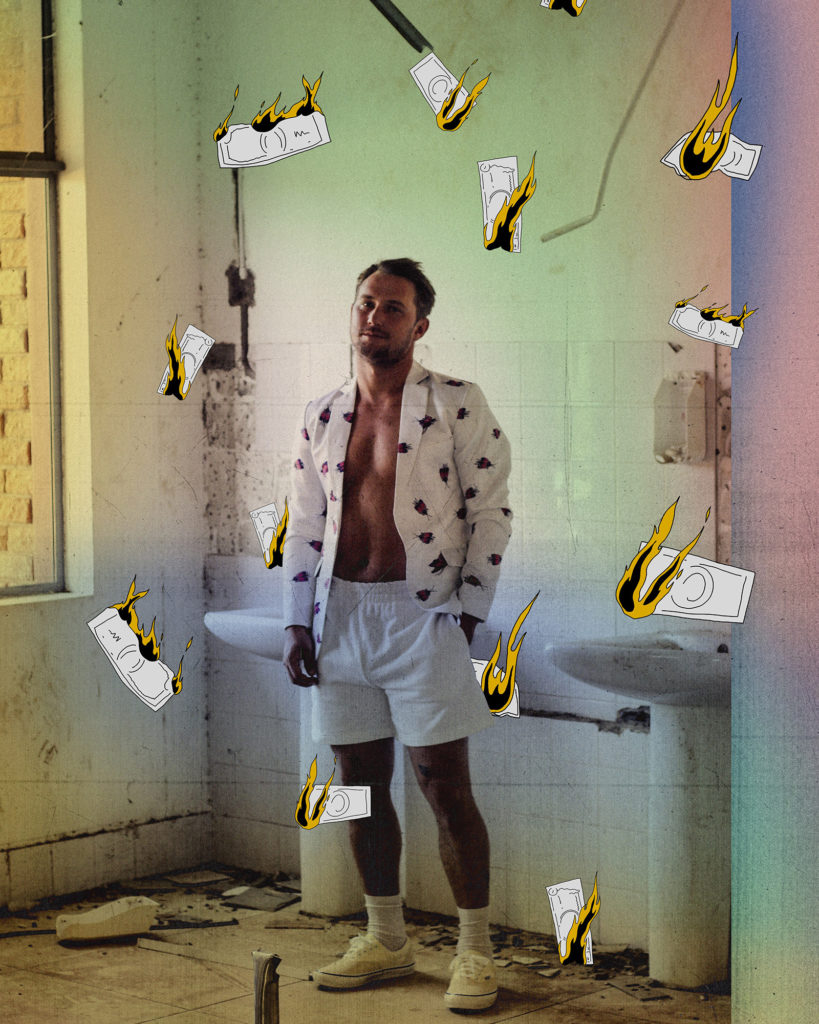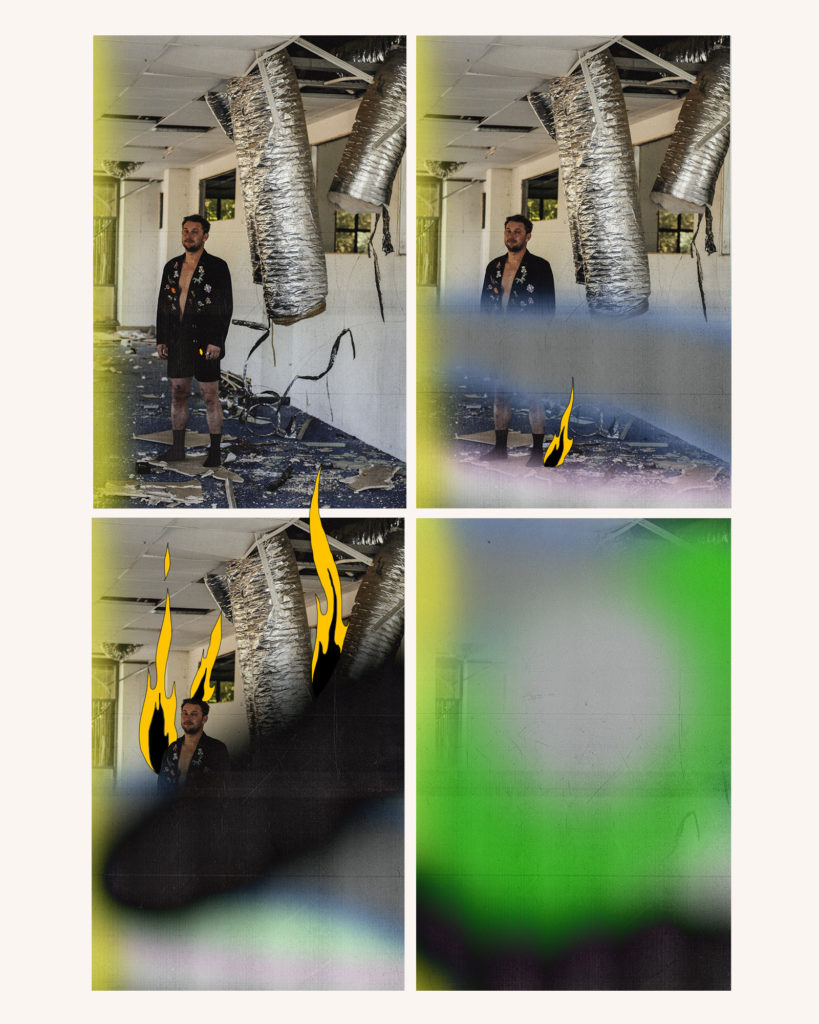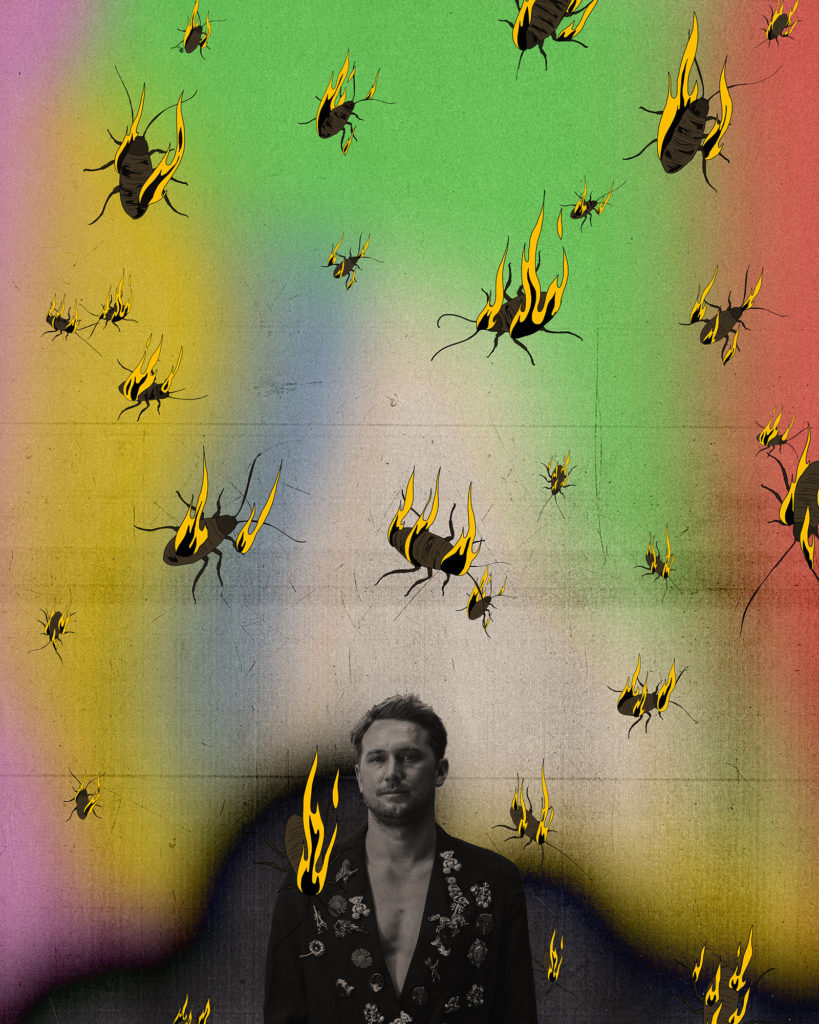“Bonfire of Vanities” by Tanlume Enyatseng.

Elaine de Kooning, ”artists are like cockroaches, everything is grist for the mill.”
Contribution by Tanlume Enyatseng.
I am tired. My brain is fried. And dots no longer connect. Common sense, composure, and self-reflection have become like holidays-few and far between. I am tired all the time. Quite simply, there are just too many things that I need to do, to stay alive. Way too many. I can no longer confidently express or identify what my occupation is at this point, however, this is not a unique experience for an artist.
It has often been reported that a majority of artists and performers earn less than they should – from their chosen profession, and that’s if they get paid at all. The classic “Great Exposure” is often offered up in lieu of money, and what you get is – 80% of artists having to hold more than one job outside of their artistry in order to pay the bills.
As agents of change and innovation, artistic workers face special challenges such as developing and sustaining a creative identity, while simultaneously growing a community. It is simply ridiculous that even after a year where people were forced to stay indoors, watching movies and reading books as a minimum, that there is still a failure to acknowledge the importance of the arts in life.

Without that writer, actor, singer, producer , and their art, we wouldn’t have had anything to entertain and keep us sane during one of the world’s most challenging times. We have romanticized the “struggling artist” trope long enough. Artists are conditioned from early stages of their careers that becoming a working artist is extremely hard. You are told to expect years of rejection ahead of you, you must suck up to gatekeepers, and you are better off looking for a second income unrelated to your passion.
Romanticizing the idea of impoverished artists struggling to create at the expense of financial security reinforces the notion that artists should create “for the sake of art” alone, with no expectation of monetizing their craft, and this normalizes the idea that an inability to support one’s self is an inherent part of an artist’s life.
While things like exposure can lead to more work, they often attract a clientele that either doesn’t pay or offer a few crumbs above zero if one is lucky.
Free work does not bring in a single actual quantifiable return except in extremely rare and specific cases. Most of the time, someone asking you to do free work, then to thank them via social media for the exposure, is taking advantage of you. A few are just employees instructed to do so and so many genuinely do not understand why you are so ungrateful to want to be paid for an actual skill you posses. It is not always a capitalist plan to manipulate or conspire… but the end result is the same. Who cares who lit the match if the house has burned down?

Not working at an industry paying rate encourages more unpaid offers which does not make professional sense. Agreeing to sing at a venue for free is bad for, not only the artist in question, but their peers and community because it reinforces an idea of how artist’s work is valued- economically.
Artists are profoundly exploited. For some reason, the arts are the only industry where low wages are considered justifiable. African artists exist within a system of racial capitalism, where structural barriers limit the ability of most to pursue the freelance or self-employed lifestyle beyond their boarders. The art world is definitely not an equal playing field and is mired in the racial and economic injustice the world experiences in all other spheres as well. Most often artists from western countries are afforded the privilege to travel to Africa to document and create content, a luxury very few African creatives get to experience in their careers.
There are drawbacks to making your art the primary source of your income in such a world, however in the words of Abstract Expressionist, Elaine de Kooning, ”artists are like cockroaches, everything is grist for the mill,”. Perhaps that’s the silver lining. That throughout adversity and pain artists always find a way to not only pour their experiences into their work but survive. Artists have the emotional strength and knowledge to cope in spite of setbacks, or barriers, or limited resources.

There is something to be said for successfully working in a field that has nothing to do with one’s art and saving the creative ideas for personal passion projects. A viable option for people who are not from a privileged economic background — those who do not have a family inheritance to live off and those who worry about each paycheck. This is the ultimate revolt against a world in which artists struggle to coexist with capitalism. After all, “you can’t kill a cockroach!”.
Contribution by Tanlume Enyatseng.
Credits:
Creative Direction & words by Tanlume Enyatseng (IG: @_mmmbanana)
Illustrations & Art Direction by Superfeat (IG: @super.feat)
Photography by Mosako Chalashika (IG: @thelowsso)
Model is Yann Horowitz (IG: @horoblitz)
Check out the GUAP Arts & Culture section, to discover new art, film, and creative individuals.




![ZINO VINCI’S ‘FILTHY & DISGUSTING’EP BRINGS YOU TO THE CORE OF THE ARTIST [@ZinoVinci]](https://guap.co/wp-content/uploads/2023/10/Zino-4.jpg)





![Remel London’s [@Remel_London] “Mainstream” is a must attend for upcoming presenters!](https://guap.co/wp-content/uploads/2017/02/REMEL-LONDON-FLYER-FINAL-YELLOW-COMPLETE-1.png)